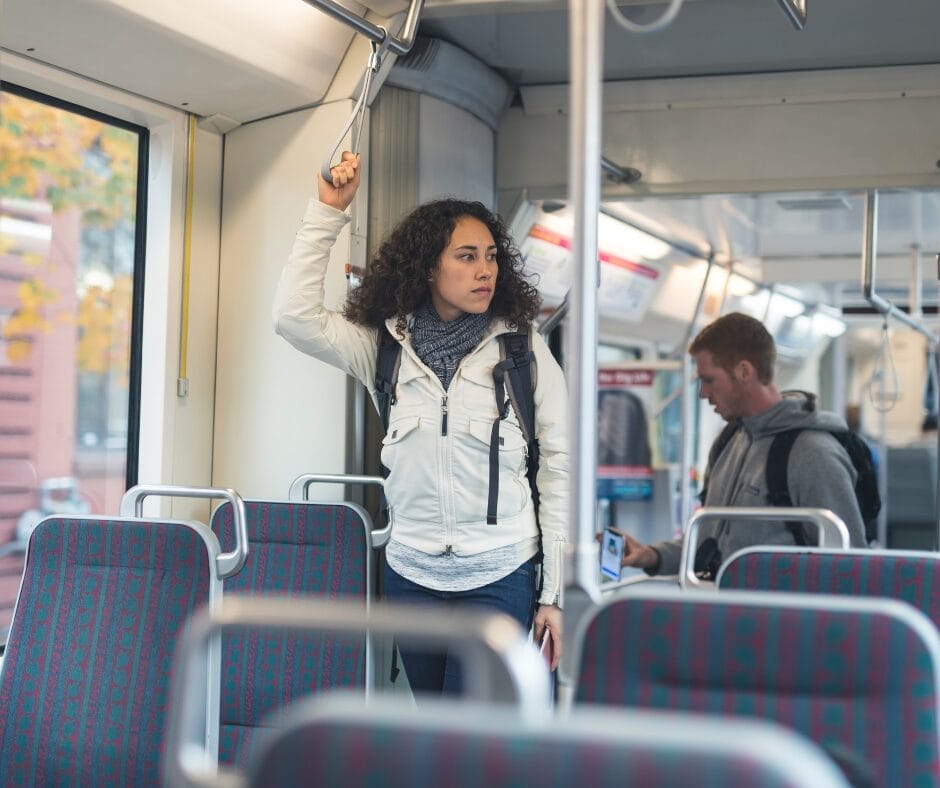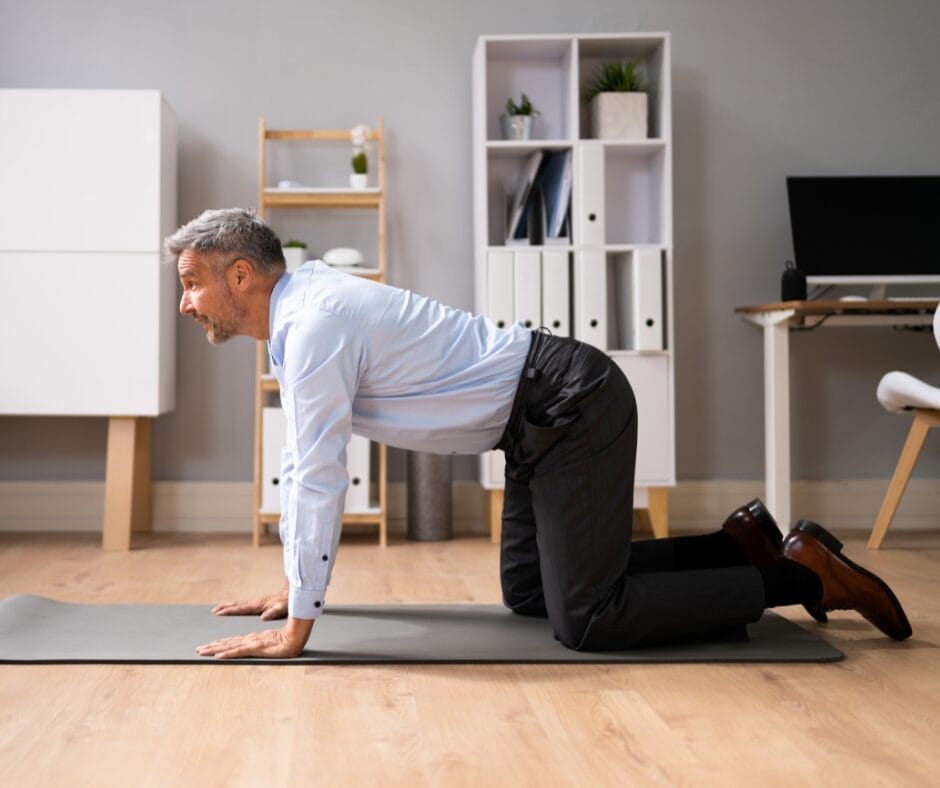Seattle commuters know the drill: the early morning rush on the Link light rail, long bus rides up I-5, or crowded ferries across Puget Sound. While public transit is a convenient and eco-friendly way to get around, it often means spending 30 minutes (or more) each day in less-than-ideal postures. Over time, those daily slouches and awkward positions can add up to chronic back and neck pain.
The good news? You don’t have to accept discomfort as part of your commute. By understanding how transit strains your body and learning simple ways to counteract it, you can make your daily ride healthier and more comfortable

Why Transit Takes a Toll on Your Body
Public transit is designed for efficiency, not ergonomics. Common factors that lead to discomfort include:
- Static postures: Sitting or standing without moving keeps muscles tense and reduces circulation.
- Awkward seating: Low-backed bus seats or plastic train benches don’t support the natural curves of your spine.
- Vibration and jolts: Sudden stops and road vibrations strain your stabilizing muscles.
- Device use: Looking down at your phone (“tech neck”) adds up to 60 pounds of pressure on your cervical spine.
- Heavy bags: Carrying backpacks, purses, or work gear unevenly puts stress on your shoulders and lower back.
Understanding these mechanics makes it easier to see why small adjustments matter.
Smart Sitting: Small Changes, Big Relief
When you do get a seat, how you position yourself can make or break your comfort:
- Sit all the way back. Allow the seatback to support you instead of perching forward. If there’s a gap, roll up a jacket to create lumbar support.
- Neutral spine. Keep your ears over your shoulders and shoulders over your hips. Avoid leaning to one side.
- Feet grounded. Your feet should rest flat on the floor (or on a bag if the seat is high). Dangling legs increase strain on your lower back.
- Knee angle. Aim for knees level with or slightly below your hips to reduce hip and lumbar pressure.

Standing Strong: Balance on the Go
Sometimes standing is unavoidable—especially during rush hour. Here’s how to do it without straining:
- Use a wide base. Keep feet hip-width apart to absorb sudden stops.
- Engage your core. A light abdominal brace (like gently zipping your belly button toward your spine) protects your lower back.
- Soften your knees. Slightly bent knees reduce shock from transit jerks and help circulation.
- Switch hands. Alternate which hand you use to hold a strap or rail to avoid uneven loading on your shoulders.
Tech Neck: How to Use Devices Safely
Seattle commuters often use transit time to catch up on emails, podcasts, or social media—but this can be the biggest culprit in neck pain. Here’s how to protect yourself:
- Raise the screen. Hold your phone at eye level instead of dropping your chin to your chest.
- Set reminders. Every 10–15 minutes, lift your gaze, roll your shoulders, and reset your posture.
- Try voice-to-text. Dictating messages reduces time spent hunched over.
Bag Smarts: Carry Without the Ache
Your daily bag could be making your commute harder on your spine:
- Go hands-free. Backpacks distribute weight evenly across both shoulders. Avoid carrying a tote on the same side every day.
- Lighten your load. Take out items you don’t need; especially on days when you’ll be commuting long distances.
- Switch it up. If you must carry a shoulder bag, alternate sides regularly to avoid repetitive strain.
Micro-Stretches You Can Do on Transit
You don’t need much space to keep your muscles loose. Try these discreet stretches:
- Neck retractions (chin tucks): Gently draw your chin back, as if making a double chin. Hold 5 seconds, repeat 5–10 times.
- Seated spinal rotation: Sit tall, gently rotate your upper body to one side, hold 10 seconds, repeat both sides.
- Shoulder blade squeezes: Pinch shoulder blades back and down, hold for 5 seconds. Repeat 10 times.
- Ankle pumps: Point and flex your feet to encourage blood flow and reduce stiffness.

Reset After the Commute
Once you arrive at work or home, give your spine a reset:
- Cat-cow stretch (on the floor or seated): Alternate arching and rounding your spine for mobility.
- Standing back bend: Place hands on your hips and gently arch backward for 10–15 seconds to counteract sitting.
- Hamstring stretch: Place one heel on a low step or bench and hinge forward to stretch the back of your leg.
These small habits can offset hours of sitting and keep your body feeling refreshed.
When to Get Extra Help
If you’re finding that your commute leaves you with consistent pain, tingling, or stiffness that lasts beyond the ride, it may be time to consult a physical therapist. At Seattle Rehab Specialists, our team can help you:
- Identify posture habits contributing to pain
- Improve flexibility and strength in key muscle groups
- Teach tailored stretches you can do on-the-go
- Support long-term spine and joint health
Bottom Line
Seattle’s commute doesn’t have to take a toll on your body. By making small adjustments to your posture, bag choices, device use, and adding simple stretches, you can transform your daily ride from a pain trigger into a healthier routine.
And if pain is already part of your commute, our physical therapists are here to help you get back on track. So you can move through the city comfortably and confidently.